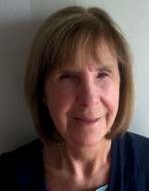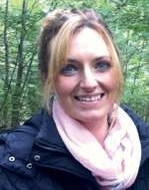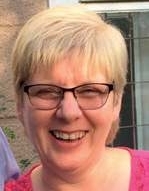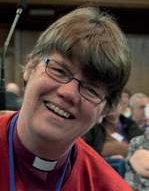The Big Question
This month’s question is: ‘What is your church doing to be accessible to as many people as possible?’
QUESTION

Barbara Urquhart, Deacon (retired), member Kilmaurs: St Maurs Glencairn

Trish Archibald, Mission Development Co-ordinator (Scotland) and member, Prestwick: Monkton North
“The contemporary hymn, Let us build a house where love can dwell, includes the rousing chorus, all are welcome in this place.
“As well as a cheery word of welcome from office-bearers on duty, to ensure this welcome is for all, the congregation in Kilmaurs have made a number of adaptations to the Church building.
“A ramp has been introduced offering ease of access while within the sanctuary some pews have been removed opening up the centre area for those using wheelchairs, buggies etc. There is a loop system provided while throughout the building the lighting is very good.
“Both large print and Braille hymnbooks are available.
“Prior to Sunday worship, the order of service is emailed in advance to those who wish it along with weekly Intimations.
“As the Braille copy of CH4 comprises of eight volumes alone, not to mention other song books on offer during worship, this enables the necessary volumes to be available.
“A regular monthly Sunday afternoon service is held for our senior members followed by afternoon tea and cakes.
Once a month all the family look forward to the popular Messy Church with its various crafts, games and activities, encouraging all members of the family to participate.
“The hall is a hive of activity as children of all ages, together with Mum and Dads, Grans and Grandpas enjoy all that is on offer, before settling down to enjoy a light supper together. Inclusion is at the heart of all we do to ensure all feel welcome.”
“Church can be a difficult place for many people. Not least, people with learning disabilities. Often people with additional needs find sermons long, church language difficult to understand, the amount of reading (song words and intimation sheets) overwhelming, and sadly people are not as welcoming as they could be.
“Prospects in Scotland are very aware of the barriers that can hinder people coming to church. They are in the business of helping overcome those barriers!
“There are currently 24 church based Prospects groups for people with learning disabilities throughout Scotland. At present, there is no such group in Ayrshire.
“I am a member of Prestwick and Monkton North Parish church. We have several members with learning disabilities. They are involved in church, sometimes helping in the service and volunteering in our church café.
“However, church is often difficult for them so we are in the process of starting a local Prospects group, where people with learning disabilities can worship, pray and learn about Jesus in a way that is relevant for them.
“Our new group is still at the planning stages; we have spoken about it with the congregation and had an initial meeting.
“We are encouraged by the number of people who want to help. We are now getting together to set a date for our new group to start, and Prospects is providing us with training and resources! We are excited about what God will do as we all learn together in this new group.”

Alex Cant, elder at Kinross Parish Church, and member of SCDG (Scottish Churches Disability Group)

Nicky Lynch, elder, Safeguarding Co-ordinator, Dunfermline: St Ninian’s

Mary Whittaker, Aberdeen: St John’s Church for Deaf People
“There is something for everyone to do in the church, as St Paul says, and we are encouraged to find out what that is.
“We have someone who has MND and has lost the power of speech, but every week he produces the service sheet intimations from his laptop with deadly accuracy.
“My daughter has learning difficulties, but please don’t tell her – she volunteered for training in leading worship, and came back with a folder of prayers.
“She dreams up fundraising ideas and then phones the Session Clerk and gets his help to reach a successful conclusion.
“Her latest idea was to start a Prospects Group (worship group for people with Learning Difficulties) and with her Mum’s help this time, along with a team (and Session Clerk’s support!) we have just finished our first year.
“Since removing the pews 12 years ago we have seen an increase in flexibility and accessibility in more than the seating.
“There’s a weekly pram service that gets infants into the church habit.
“As well as a Junior Church, we have several youth groups for teenagers to pass through, and we support a Christian Youth Worker in the local school.
“All this helps to keep Church accessible.
“One Sunday afternoon, we filled the church with tables set for tea and invited over 60 old folk, who live on their own, for a concert of songs of the 30s/40s with a live band and delicious home baking.
“We try to be a church for all.”
“We are have a modern building with ramps and fully accessible doors and facilities. We have a number of our congregation who are wheelchair users, deaf and sight impaired.
We have a loop system for hearing impaired. We have a number of orders of services made up in large print for those who have difficulties with hymn books. We have a buddy system in place for a young boy who is on the autistic spectrum and an older gentleman who is sight impaired and has a learning disability.
“We have our local high school Assisted Learning Department and their pupils help at our weekly coffee morning, supported by a teacher. We hold monthly Prospects Group on the last Saturday of each month, working with Prospects Scotland.
“For many families and care workers, attending a service of worship in a church can be stressful and uncomfortable; the silent disapproval of a congregation when a person with learning disabilities makes impromptu noises and movements or asks questions when they don’t understand.
“Our Prospects group gives people with learning disabilities the time and space to feel comfortable in a church environment.
“We start with a cuppa to relax into the environment, short acts of worship with songs that can be communicated by signing and short craft sessions, this is followed by fellowship and lunch.
“We have people who travel from different parts of the area and we meet annually in May and October with other Prospects groups throughout Scotland.”
“As the congregation sit in a large horseshoe arrangement, the minister facing them starts to wave her arms around.
“All eyes very quickly turn to the screen on the wall announcing the theme of the service. “There is no prelude.
“The first hymn comes up and everyone except the minister remains sitting but no music or voice is heard yet every hand in the room moves in harmony and in rhythm.
“One visitor has become completely lost. In fact, all throughout the service, the worship is conducted in silence and the PowerPoint, not the microphone, is the amplifier.
“For the visitor, the boot is on the other foot – welcome to the Deaf Church!
“The Minister and the congregation are Deaf using BSL (British Sign Language).
“There is no interpreter to voice-over for hearing visitors. Everything is visual and interactive – it is the norm during the sermon for the congregation to ask questions, seeking clarification and making comments.
“We tend to use objects to help in our prayers eg a hand-shaped post-it-note to write, draw and/or bend the fingers and stick onto the cross.
“BSL is a language in its own right with its own grammar and syntax but we do try, as English is our second language, to make our church accessible to non-BSL users – by sitting next to them and writing down notes, and by following the PowerPoint of usually 30 slides or more!
“There is a difference between accessible and inclusive.”